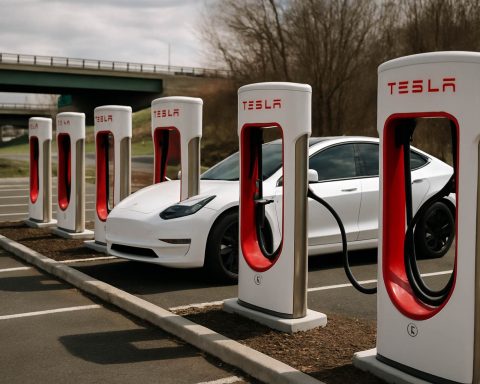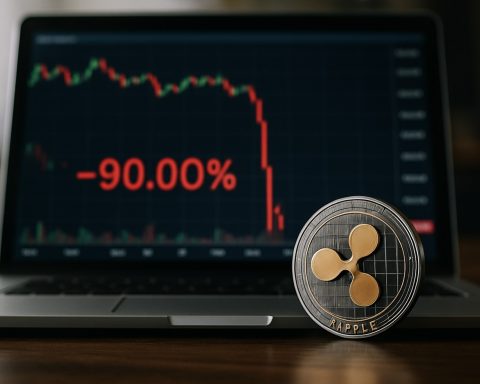- Barry “Butch” Wilmore and Sunita “Suni” Williams spent over 270 days in space, exceeding their planned 8-day Starliner mission, showcasing unexpected challenges of prolonged space travel.
- Prolonged space missions cause significant physical changes, including muscle atrophy and bone density loss, with astronauts losing up to 30% of muscle and 1.5% bone density per month.
- The effects of space extend to cognitive functions and DNA, requiring astronauts to undergo extensive rehabilitation upon returning to Earth.
- Space exploration highlights the necessity of preparing the human body for the physiological demands of long-duration missions, alongside advancing technology.
- Despite technological advancements, humans remain biologically tethered to Earth’s gravity, emphasizing the need for understanding and adapting to space’s harsh environment.
Floating weightlessly within the confines of their celestial home, Barry “Butch” Wilmore and Sunita “Suni” Williams have spent more than 270 days encapsulated in the void of space—a stark contrast to the mere eight days originally intended for their trip aboard the first crewed voyage of Boeing’s Starliner. Their prolonged stay highlights the unforeseen challenges and sacrifices that come with venturing into the final frontier.
As the Starliner voyage extended into a nine-month odyssey, back on Earth, a presidential election unfolded, seasons changed, and life went on. Butch, at 62, and Suni, at 59, now gaze back at the home planet from an unfamiliar perspective, awaiting a long-overdue return this month. Yet, the real journey begins upon their planetfall, as their bodies demand acclimatization after months without gravity.
Space’s harsh embrace offers no respite to the human body. Record-setting astronauts like Valeri Polyakov, who spent 437 days among the stars, and Frank Rubio, who endured 371 days, paint a vivid picture of these physical transformations. Upon their return, they’ve had to confront the reality of weakened muscles, diminished bone density, and other drastic physiological shifts.
While floating effortlessly might seem idyllic, it extracts a steep toll—astronauts can lose up to 30% of their muscle and bone mass over missions stretching beyond half a year. The absence of gravity means muscles used for simple earthly tasks waste away due to disuse, leading to substantial atrophy. NASA reveals that critical weight-bearing bones can lose up to 1.5% of their mineral density each passing month in space. As if balancing on a tightrope, returning astronauts must regain their strength to stand sturdy on terra firma once more.
Moreover, the ripple effects of cosmic travel aren’t confined to physical transformations. The prolonged exposure to the space environment alters cognitive functions, gut bacteria, and even their very DNA, posing new challenges upon reentry. For instance, Scott Kelly, another astronaut, experience these changes firsthand, reinforcing the notion that space serves as an unforgiving gauntlet for the human body.
Wilmore and Williams face an extensive rehabilitation period. Experts anticipate at least six weeks of rigorous therapy to renew their bodily strength and equilibrium. And as they ready themselves for the descent, but their sacrifices continue to redefine human limits.
The enduring message from their voyage is a somber reflection on humanity’s quest to conquer space. While technology propels us further from Earth, we remain biologically tethered to its gravity. As we continue to dream of interstellar journeys and longer stays on other planets, preparing our bodies for the extraordinary challenges of space will be just as critical as the technology that gets us there. As Butch and Suni return from their contemplative starlit sojourn, we’re reminded that each step away from Earth calls for a corresponding leap in our understanding of the human body and how it can adapt to new worlds.
Astronauts’ Heartfelt Odyssey: The Hidden Trials of Extended Space Missions
The Complex Reality of Prolonged Space Missions
The prolonged stay of astronauts Barry “Butch” Wilmore and Sunita “Suni” Williams aboard Boeing’s Starliner highlights not only their extraordinary resilience and adaptability but also underscores significant challenges faced in prolonged space missions. While the original mission was intended for a mere eight-day journey, the astronauts have had to navigate an extended mission lasting over 270 days, showcasing both the potential and pitfalls of human space travel.
How Space Impacts the Human Body
Physical Changes and Rehabilitation
Extended space travel has profound physiological impacts on astronauts. The absence of gravity leads to muscle atrophy and bone density loss, compelling returning astronauts to undertake intensive rehabilitation. NASA states that astronauts can lose up to 30% of their muscle and bone mass in missions extending beyond six months.
– Muscle Atrophy: Due to the lack of gravitational forces, muscles that are seldom used in space quickly deteriorate.
– Bone Density Reduction: Critical weight-bearing bones can lose approximately 1.5% of mineral density each month. Rehabilitation involves engaging in weight-bearing exercises to counteract these effects on Earth.
– Therapy Duration: Experts estimate a minimum of six weeks of strenuous physical therapy is required post-mission to help astronauts regain physical function and balance.
Biological and Cognitive Effects
The prolonged stay in space alters not only the physical but also biological and cognitive aspects of astronauts:
– DNA and Cellular Changes: Space travel can induce genetic and cellular changes, affecting immune function and possibly leading to long-term health implications.
– Cognitive Functions: Prolonged exposure to microgravity may also impact cognitive abilities and decision-making processes, posing challenges in high-stress environments.
Trends and Future Endeavors in Space Travel
Given the duration of this mission, it reflects an increasing trend towards longer-term space inhabitation, echoing missions conducted by record-setting astronauts like Valeri Polyakov and Frank Rubio. Such missions are crucial in preparing humanity for potential future settlement on other planets, such as Mars.
Market Forecast and Industry Trends
– Privatization of Space Travel: With companies like Boeing and SpaceX at the forefront, space travel is seeing a shift towards privatization, enhancing innovation but also introducing new dynamics and challenges.
– Technology Development: Advances in spacecraft technology aim to mitigate the negative physical effects of space travel by incorporating artificial gravity mechanisms or more efficient exercise equipment.
Actionable Tips for Aspiring Astronauts
– Physical Fitness: Maintaining peak physical condition is essential before and after space missions. Regular exercise is crucial for muscle and bone health.
– Mental Resilience: Preparing mentally for the isolation and challenges of space travel is as crucial as physical preparation.
– Continuous Learning: Engage with ongoing research in space travel’s physiological and cognitive effects to remain informed and prepared.
Final Thoughts
The journey of Wilmore and Williams serves as a radical reminder that as humanity stretches its reach into the cosmos, understanding and preparing for the physiological demands of space travel is critical. As technology advances, it must be matched by parallel advancements in our understanding of human biology and adaptability to ensure the wellbeing of those who explore beyond Earth’s confines.
For more insights and updates on space exploration and technology, visit NASA’s official website.














